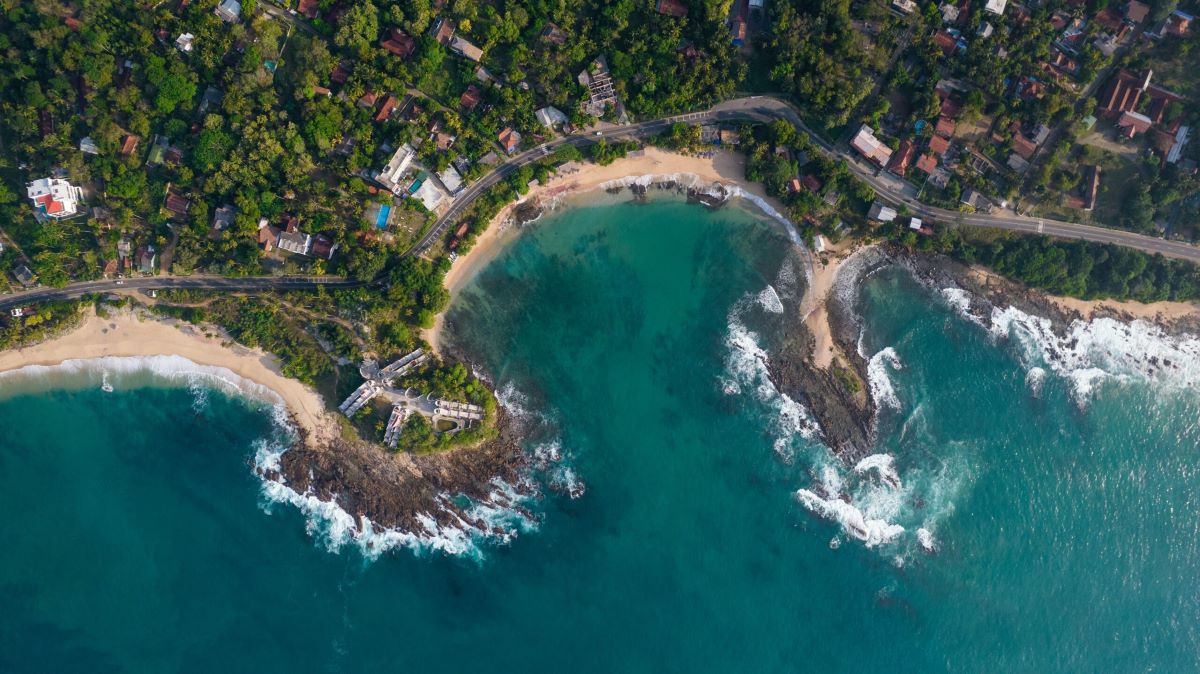Sri Lanka, an island nation located just southeast of India, is a land of breathtaking beauty, rich history, and cultural diversity. Known as the “Pearl of the Indian Ocean,” this tropical paradise offers a unique blend of natural wonders, ancient cities, vibrant culture, and warm hospitality. In this blog, we will explore the geography, history, cultural heritage, and the natural beauty that makes Sri Lanka a truly enchanting destination.
Table of Contents
Geography
Sri Lanka is located in the Indian Ocean, southwest of the Bay of Bengal and southeast of the Arabian Sea. Covering an area of about 65,610 square kilometers, the island is characterized by its diverse topography, which includes coastal plains, rolling hills, and rugged mountains. The central highlands are dominated by the island’s highest peak, Pidurutalagala, which stands at 2,524 meters. Sri Lanka’s coastline is dotted with stunning beaches, while its interior boasts lush forests, fertile plains, and numerous rivers and lakes.
The island’s climate is typically tropical, with distinct wet and dry seasons. The southwest monsoon brings heavy rains from May to September, affecting the southern and western regions, while the northeast monsoon brings rains from December to February, mainly impacting the northern and eastern parts of the country. This diverse climate supports a variety of ecosystems, from rainforests and mangroves to dry zones and highland forests.
States of Sri Lanka
Sri Lanka is divided into nine provinces, which are further subdivided into districts.
| No. | Province | Districts |
|---|---|---|
| 1 | Western Province | Colombo, Gampaha, Kalutara |
| 2 | Central Province | Kandy, Matale, Nuwara Eliya |
| 3 | Southern Province | Galle, Matara, Hambantota |
| 4 | Northern Province | Jaffna, Kilinochchi, Mannar, Mullaitivu, Vavuniya |
| 5 | Eastern Province | Batticaloa, Ampara, Trincomalee |
| 6 | North Western Province | Kurunegala, Puttalam |
| 7 | North Central Province | Anuradhapura, Polonnaruwa |
| 8 | Uva Province | Badulla, Monaragala |
| 9 | Sabaragamuwa Province | Ratnapura, Kegalle |
History
Sri Lanka’s history is a rich tapestry that spans over 2,500 years. The island’s strategic location along major sea routes has made it a key maritime hub in the Indian Ocean, attracting traders, explorers, and conquerors from various parts of the world.
Ancient Kingdoms
The earliest recorded history of Sri Lanka dates back to the 6th century BCE with the arrival of Prince Vijaya from India, who established the first Sinhalese kingdom. The ancient cities of Anuradhapura and Polonnaruwa served as capitals and cultural centers, where Buddhism flourished and impressive architectural and engineering feats were accomplished. The reigns of these ancient kingdoms saw the construction of grand stupas, reservoirs, and palaces, many of which are now UNESCO World Heritage sites.
Anuradhapura, founded in the 4th century BCE, was the first capital and the center of Theravada Buddhism for many centuries. The city boasts numerous monasteries, stupas, and temples, including the sacred Bodhi Tree, a direct descendant of the tree under which Buddha attained enlightenment.
Polonnaruwa, which became the capital in the 11th century CE, is renowned for its well-preserved ruins, including the Royal Palace, the Quadrangle, and the Gal Vihara, a group of stunning Buddha statues carved out of rock. This city reflects the zenith of ancient Sri Lankan civilization, showcasing sophisticated urban planning and monumental architecture.
Colonial Era
In the 16th century, European colonial powers began to establish their presence in Sri Lanka. The Portuguese were the first to arrive, followed by the Dutch, and finally the British, who took control of the entire island in 1815. The colonial period brought significant changes to Sri Lanka’s economy, society, and infrastructure. The British introduced coffee, tea, and rubber plantations, transforming the island’s landscape and economy. The legacy of colonial architecture is still evident in many parts of Sri Lanka today.
The Portuguese initially arrived in 1505, establishing a foothold in coastal areas and introducing Christianity. Their influence is still visible in the form of churches and fortifications. The Dutch took over in the mid-17th century, fortifying their control through the Dutch East India Company. They left behind a legacy of Dutch architecture, particularly in Galle, with its iconic fort.
The British era began in 1815, marking a significant shift in Sri Lanka’s history. They unified the island under a single administration, introduced modern education, and developed infrastructure, including railways and roads. The British also promoted the plantation economy, particularly tea, which remains a vital industry in Sri Lanka.
Independence and Modern Era
Sri Lanka gained independence from British rule in 1948. The post-independence period was marked by efforts to build a cohesive national identity and address social and economic challenges. However, the country also experienced a prolonged civil conflict between the government and the Liberation Tigers of Tamil Eelam (LTTE), which ended in 2009. Since then, Sri Lanka has made significant strides in rebuilding and developing its economy, infrastructure, and tourism sector.
The civil war, lasting over 25 years, had a profound impact on the country, causing immense suffering and displacement. The end of the conflict has allowed Sri Lanka to focus on reconciliation, economic development, and tourism. Today, the country is a vibrant democracy with a growing economy, leveraging its strategic location, rich cultural heritage, and natural beauty to attract visitors from around the world.
Top Ten Must-Visit Destinations in Sri Lanka
Sri Lanka, often referred to as the “Pearl of the Indian Ocean,” is a destination rich in history, culture, and natural beauty. From ancient ruins to stunning beaches, the island nation offers a diverse array of attractions that cater to every type of traveler. Here are ten must-visit destinations in Sri Lanka that showcase the best the country has to offer.
1. Sigiriya Rock Fortress

Sigiriya, also known as Lion Rock, is an ancient rock fortress and palace ruin located in the central Matale District. This UNESCO World Heritage site is one of Sri Lanka’s most iconic landmarks. The climb to the top of the rock includes a visit to the Sigiriya frescoes, the Mirror Wall, and the Lion’s Paw Terrace. The panoramic views from the summit are breathtaking and provide a glimpse into the grandeur of ancient Sri Lankan architecture.
2. Temple of the Sacred Tooth Relic

Located in Kandy, the Temple of the Sacred Tooth Relic is one of the most sacred Buddhist sites in the world. The temple houses a tooth relic of Lord Buddha and is a significant pilgrimage site for Buddhists. The temple complex is renowned for its beautiful architecture and intricate wood and ivory carvings. Visitors can also witness traditional rituals and ceremonies that take place daily.
3. Yala National Park

Yala National Park, situated in the southeast region of Sri Lanka, is the most visited and second-largest national park in the country. The park is famous for its high density of leopards, making it one of the best places in the world to spot these elusive big cats. In addition to leopards, Yala is home to a variety of wildlife, including elephants, sloth bears, crocodiles, and numerous bird species. Safari tours offer a thrilling way to explore the park’s diverse ecosystems.
4. Galle Fort

Galle Fort, a UNESCO World Heritage site, is a historic fortress located on the southwestern coast of Sri Lanka. Built by the Portuguese in the 16th century and later fortified by the Dutch, Galle Fort is a testament to Sri Lanka’s colonial past. The fort’s cobblestone streets, colonial-era buildings, and ramparts provide a charming atmosphere. Visitors can explore museums, boutique shops, cafes, and the iconic Galle Lighthouse.
5. Adam’s Peak (Sri Pada)

Adam’s Peak, also known as Sri Pada, is a conical mountain located in central Sri Lanka. It is a revered pilgrimage site for multiple religions, including Buddhism, Hinduism, Christianity, and Islam. The summit features a footprint-shaped rock formation believed to be the sacred footprint of Buddha, Shiva, Adam, or St. Thomas, depending on the religious tradition. The climb to the top is challenging but rewarding, especially if timed to witness the stunning sunrise.
6. Dambulla Cave Temple

The Dambulla Cave Temple, also known as the Golden Temple of Dambulla, is a UNESCO World Heritage site situated in central Sri Lanka. This complex of five caves houses over 150 statues of Buddha and elaborate murals depicting Buddhist scenes. The temple, dating back to the 1st century BCE, is the largest and best-preserved cave temple complex in Sri Lanka. Visitors can explore the richly decorated interiors and enjoy panoramic views from the hilltop.
7. Horton Plains National Park

Horton Plains National Park, located in the central highlands, is a protected area known for its unique landscapes and biodiversity. The park’s highlight is the World’s End, a sheer cliff with a drop of about 870 meters, offering spectacular views on clear days. The park also features Baker’s Falls and a variety of wildlife, including sambar deer, leopards, and numerous bird species. The park’s high-altitude grasslands and cloud forests provide a refreshing escape.
8. Pinnawala Elephant Orphanage

The Pinnawala Elephant Orphanage, situated in the Sabaragamuwa Province, is a sanctuary for orphaned and injured elephants. Established in 1975, the orphanage provides care and protection for these gentle giants. Visitors can observe the elephants being fed, bathed, and interacting in a natural setting. The highlight is the daily bathing ritual in the nearby river, where visitors can watch the elephants enjoy their time in the water.
9. Polonnaruwa Ancient City.

Polonnaruwa, another UNESCO World Heritage site, is an ancient city that served as the capital of Sri Lanka from the 11th to the 13th centuries. The well-preserved ruins include palaces, temples, stupas, and statues, showcasing the architectural and artistic achievements of the time. Highlights include the Royal Palace, the Gal Vihara rock carvings, and the Lankatilaka Temple. A visit to Polonnaruwa offers a fascinating glimpse into Sri Lanka’s rich history.
10. Mirissa

Mirissa, located on the southern coast, is a charming coastal town known for its stunning beaches and vibrant marine life. The main attraction is whale watching, as Mirissa is one of the best places in the world to see blue whales and sperm whales. The best time for whale watching is from November to April. Mirissa’s beaches are also ideal for relaxation, swimming, and enjoying the laid-back atmosphere of this coastal paradise.
Culture
Sri Lanka’s culture is a vibrant mosaic of influences from its multi-ethnic and multi-religious society. The island’s cultural heritage is deeply rooted in Buddhism, which has shaped its traditions, art, and architecture. Hinduism, Islam, and Christianity also play important roles in the cultural fabric of Sri Lanka.
Festivals
Sri Lanka is known for its colorful and lively festivals, which reflect the island’s religious and cultural diversity. The Sinhala and Tamil New Year, celebrated in April, marks the end of the harvest season and the beginning of the new year. Vesak, celebrated in May, commemorates the birth, enlightenment, and passing of the Buddha and is marked by beautiful lanterns and illuminated pandals. Other significant festivals include Deepavali (Diwali), Eid al-Fitr, and Christmas.
Art and Music
Sri Lankan art and music are rich and diverse, influenced by centuries of tradition and external influences. Traditional dance forms, such as Kandyan dance and low-country dance, are integral parts of religious and cultural ceremonies. The island’s music ranges from classical to contemporary, with traditional instruments like the ravanahatha and tabla playing key roles in performances.
Culinary Heritage
Sri Lanka’s cuisine is a reflection of its cultural diversity, blending flavors from various ethnic groups. The food is characterized by the use of aromatic spices, fresh herbs, and coconut. Rice and curry is the staple dish, typically served with a variety of vegetable, fish, or meat curries, accompanied by sambols (spicy relishes) and pickles.
Some popular dishes include:
- Hoppers (Appa): A type of bowl-shaped pancake made from fermented rice flour and coconut milk, often enjoyed with an egg or spicy sambol.
- Kottu Roti: A street food favorite made by stir-frying shredded roti bread with vegetables, meat, and spices.
- Lamprais: A Dutch-influenced dish consisting of rice boiled in stock, served with meat, vegetables, and sambol, all wrapped in a banana leaf and baked.
- Pol Sambol: A spicy coconut relish made with grated coconut, red chili powder, lime juice, and onions, often served with rice and curry.
Top Eight Most Famous Food of Sri Lanka
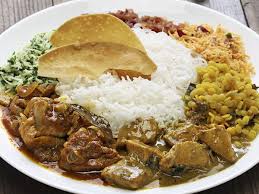


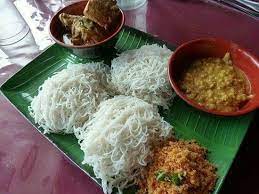


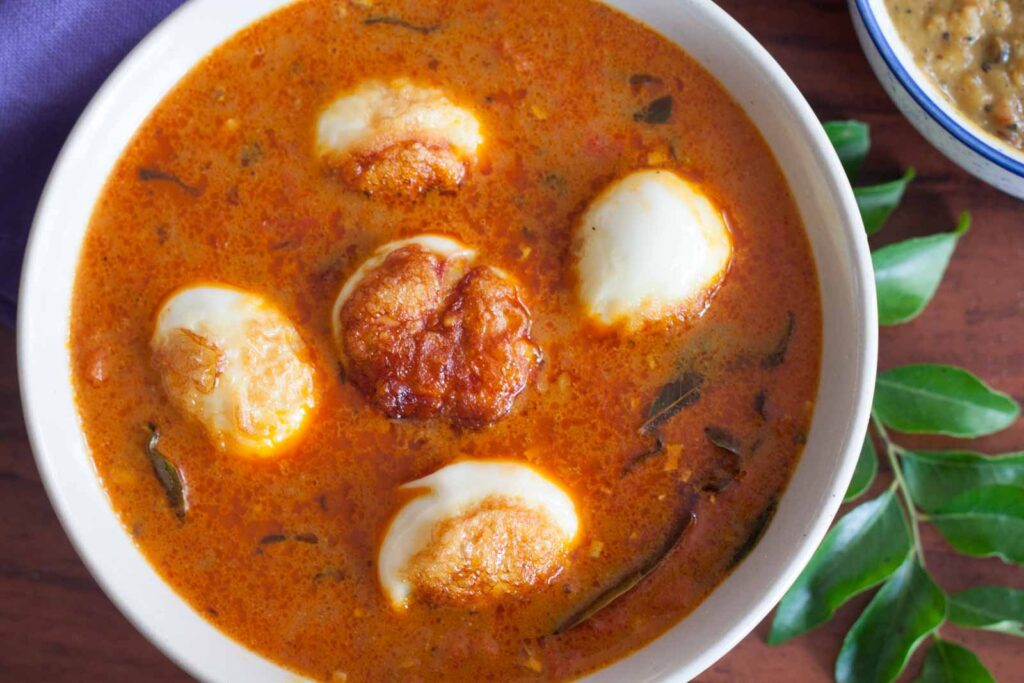
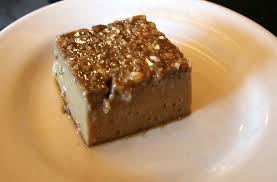
Wildlife
Sri Lanka is home to a rich diversity of wildlife, offering an abundance of opportunities to witness its natural beauty up close. The island boasts a variety of ecosystems that support a wide range of species, from majestic elephants and elusive leopards to colorful birds and unique reptiles. National parks and wildlife reserves scattered across the island provide sanctuary for these creatures, allowing visitors to experience their habitats in a responsible and sustainable manner.
Yala National Park is one of the most famous wildlife reserves in Sri Lanka, known for its high density of leopards. The park’s diverse landscape, which includes forests, grasslands, and lagoons, supports a variety of animals, including elephants, sloth bears, and crocodiles. Birdwatchers can delight in spotting numerous bird species, both resident and migratory, making Yala a paradise for wildlife enthusiasts.
Wilpattu National Park, the largest in Sri Lanka, is renowned for its unique “willus” or natural lakes. These water bodies attract a wide array of wildlife, including leopards, elephants, and water buffalo. The park’s dense forests and open grasslands provide a perfect habitat for many species, offering visitors a chance to see animals in their natural environment.
Udawalawe National Park is particularly famous for its large elephant population. This park, centered around the Udawalawe Reservoir, is an excellent place to observe these gentle giants, especially during the dry season when they gather near water sources. The park also hosts various other animals, such as sambar deer, wild boar, and numerous bird species.
In addition to these major parks, Sri Lanka has several other reserves and protected areas, each with its unique offerings. From the wetlands of Bundala National Park, known for its flamingos and other waterbirds, to the lush rainforests of Sinharaja, a UNESCO World Heritage site teeming with endemic species, Sri Lanka’s wildlife reserves are a testament to the island’s biodiversity and commitment to conservation.
Beaches
Sri Lanka’s coastline stretches over 1,600 kilometers, offering a stunning array of beaches that cater to different tastes and activities. Whether you’re looking for a tranquil spot to relax, a vibrant area for water sports, or a scenic location to explore, Sri Lanka’s beaches have something for everyone.
Bentota, located on the southwestern coast, is renowned for its golden sands and calm waters, making it a perfect destination for sunbathing and swimming. The beach is also famous for its water sports, including jet-skiing, windsurfing, and snorkeling. Bentota River, which flows into the sea here, adds to the area’s charm, providing opportunities for boat rides and mangrove tours.
Arugam Bay, situated on the eastern coast, is a world-famous surfing destination. With its consistent waves and laid-back atmosphere, it attracts surfers from all over the globe. The bay’s crescent-shaped beach is ideal for surfing, especially from May to October. Besides surfing, visitors can explore nearby attractions like the Kumana National Park, known for its birdlife.
Mirissa, on the southern coast, is a tranquil haven known for its palm-fringed shores and turquoise waters. This beach is a fantastic spot for whale watching, especially during the migration season from November to April. Mirissa also offers excellent conditions for snorkeling and diving, allowing visitors to explore vibrant coral reefs and marine life.
Galle, a UNESCO World Heritage site, combines cultural charm with beautiful beaches. The historic Galle Fort, with its colonial architecture and cobblestone streets, provides a unique backdrop to the nearby beaches. Unawatuna Beach, close to Galle, is famous for its clear waters and vibrant coral reefs, making it a favorite for snorkeling and diving.
Other notable beaches include the pristine shores of Nilaveli and Uppuveli on the northeast coast, the serene Tangalle beaches on the south coast, and the bustling Hikkaduwa beach, known for its lively nightlife and coral sanctuary. Each of these beaches offers its own unique experience, contributing to Sri Lanka’s reputation as a top beach destination in the world.
Hill Country
The central highlands of Sri Lanka, commonly referred to as the Hill Country, are a region of unparalleled natural beauty. Characterized by rolling hills, lush tea plantations, cascading waterfalls, and cool, misty climates, the Hill Country offers a refreshing contrast to the tropical lowlands.
Kandy, the cultural capital of the Hill Country, is a city steeped in history and spirituality. The Temple of the Sacred Tooth Relic, a UNESCO World Heritage site, is one of the most important Buddhist pilgrimage sites in the world. Kandy’s scenic beauty is enhanced by the surrounding hills and the serene Kandy Lake, making it a perfect gateway to explore the Hill Country.
Nuwara Eliya, often referred to as “Little England,” is a charming town set amidst the cool climes of the highlands. Known for its colonial architecture, pristine gardens, and tea estates, Nuwara Eliya offers a nostalgic glimpse into Sri Lanka’s colonial past. The town is surrounded by tea plantations, where visitors can tour factories and learn about the tea-making process while enjoying breathtaking views.
Ella, a small town nestled in the hills, has gained popularity for its stunning landscapes and laid-back vibe. The Ella Gap provides panoramic views of the southern plains, while attractions like the Nine Arches Bridge and Little Adam’s Peak offer picturesque hiking opportunities. Ella’s charm lies in its blend of natural beauty, quaint cafes, and welcoming atmosphere.
Horton Plains National Park, another UNESCO World Heritage site, is a unique highland plateau known for its biodiversity and scenic beauty. The park’s most famous attraction is World’s End, a sheer cliff with a drop of about 870 meters, offering breathtaking views on clear days. The park is also home to a variety of flora and fauna, including sambar deer, leopards, and numerous bird species.
The Hill Country is also home to the iconic Sigiriya Rock Fortress, an ancient rock fortress and palace built by King Kashyapa in the 5th century. The climb to the top of the rock, through its ancient frescoes and mirror wall, rewards visitors with stunning views of the surrounding countryside. Sigiriya is a testament to Sri Lanka’s rich history and architectural prowess.
The Hill Country’s beauty is further enhanced by its numerous waterfalls, such as Diyaluma Falls, Bambarakanda Falls, and Ramboda Falls. These cascading waterfalls, set against the lush green backdrop, add to the region’s scenic allure. Additionally, the area is known for its picturesque train journeys, with the route from Kandy to Ella being particularly famous for its scenic views.
Sri Lanka’s Hill Country is a haven for nature lovers, adventure seekers, and those looking to escape the tropical heat. Its cool climate, stunning landscapes, and rich cultural heritage make it a must-visit destination within the island.
Conclusion
Sri Lanka is a destination that captivates the hearts of all who visit. Its rich history, vibrant culture, and stunning natural beauty make it a unique and enchanting place to explore. From ancient cities and colonial heritage to diverse wildlife and pristine beaches, Sri Lanka offers an unforgettable experience for every traveler. Whether you’re seeking adventure, relaxation, or cultural immersion, the “Pearl of the Indian Ocean” promises to leave you with lasting memories and a desire to return again and again.
let’s enjoy few years on earth with peace and happiness….✍🏼🙏

